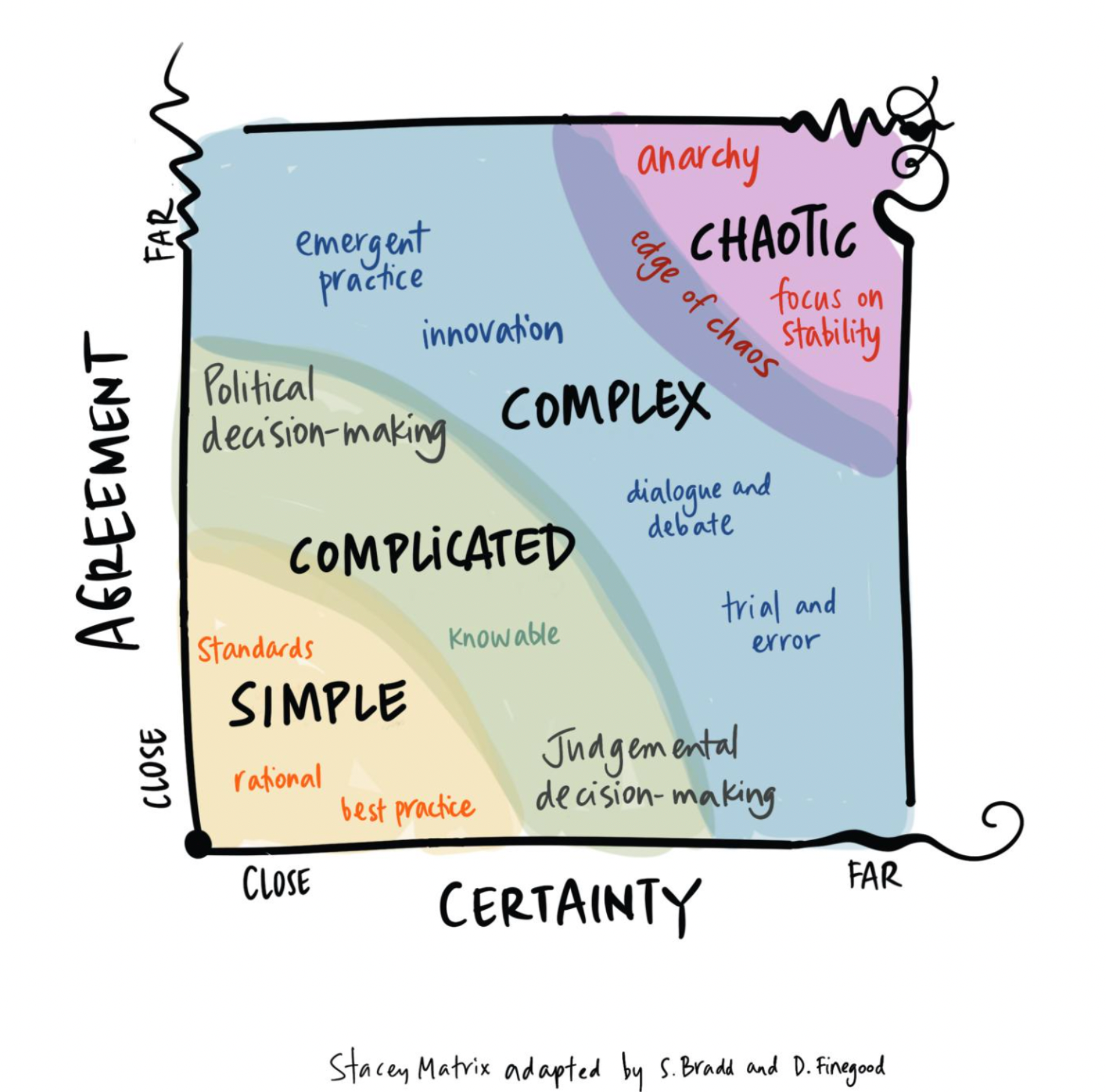Leading Through Uncertainty: Where Teams Grow
Teams grow most when certainty is scarce. The Stacey Matrix reminds us that innovation and collaboration thrive in complexity—where answers aren’t obvious, but learning and collective strength emerge.

Contributed by David LeBlanc
In leadership and team development, we often talk about the need for clarity, alignment, and direction. Certainty feels safe. When the path forward is obvious and the right answers are clear, leaders can lean on expertise and established processes. But what about when the path is uncertain—when challenges are complex, unpredictable, and the “right” way forward isn’t obvious?
This is where the Stacey Matrix offers a helpful lens. Developed by Ralph Stacey, the matrix maps decision-making contexts along two axes: the degree of certainty about cause-and-effect relationships, and the degree of agreement among stakeholders.

- Close to certainty and agreement: Problems are simple or complicated, and solutions can be found with expertise, best practices, and proven methods.
- Farther from certainty and agreement: Problems become complex or chaotic, where outcomes are unpredictable and solutions emerge only through experimentation, adaptation, and learning.
Most leaders and teams prefer the lower left side of the matrix—the space of clarity and control. Yet, the most profound growth happens on the outer edges, in the uncertain and complex space.
Why Growth Happens in Uncertainty
- Experimentation unlocks innovation.
When cause and effect aren’t obvious, teams can’t rely on old playbooks. They must try new approaches, test, and learn. This iterative process not only surfaces creative solutions but also builds team adaptability and resilience. - Collaboration deepens.
In conditions of uncertainty, no single expert has the answer. Teams must draw on diverse perspectives, listen actively, and co-create strategies. This builds trust, respect, and collective intelligence. - Leadership shifts.
Traditional command-and-control leadership falters in the complex domain. Instead, leaders must create space for inquiry, foster psychological safety, and empower the team to navigate ambiguity together. This is where leaders practice humility and curiosity—qualities that strengthen relationships and long-term effectiveness. - Learning accelerates.
Uncertainty forces reflection. Teams must pause, ask what they are noticing, and adjust. This reflective practice becomes a muscle for ongoing growth, helping teams become more agile and responsive.
Practical Moves for Teams
- Name the space. Help your team locate where they are on the Stacey Matrix. Is the issue simple, complicated, complex, or chaotic? Naming it reduces anxiety and opens up new strategies.
- Create safe-to-fail experiments. In complexity, small steps forward are more effective than grand plans. Design pilots where “failure” becomes valuable learning.
- Hold space for dialogue. Lean into multiple perspectives. Conflict and disagreement, when managed well, are signs of healthy exploration.
- Anchor to values. While certainty of outcomes may be lacking, clarity of purpose and values gives the team a compass in uncertain waters.
The Paradox of Certainty
Teams often say they crave certainty, but what they truly need is confidence in their capacity to work together when certainty isn’t possible. The paradox is that growth doesn’t come from knowing all the answers—it comes from learning how to navigate when the answers aren’t clear.
As leaders, our role is not to eliminate uncertainty but to equip our teams to thrive within it. That’s where resilience, creativity, and collective strength take root—and where the future of leadership truly lives.
Reflection for Teams:
- Where in your work are you clinging to certainty?
- What might open up if you allowed more room for inquiry, experimentation, and collective learning?





